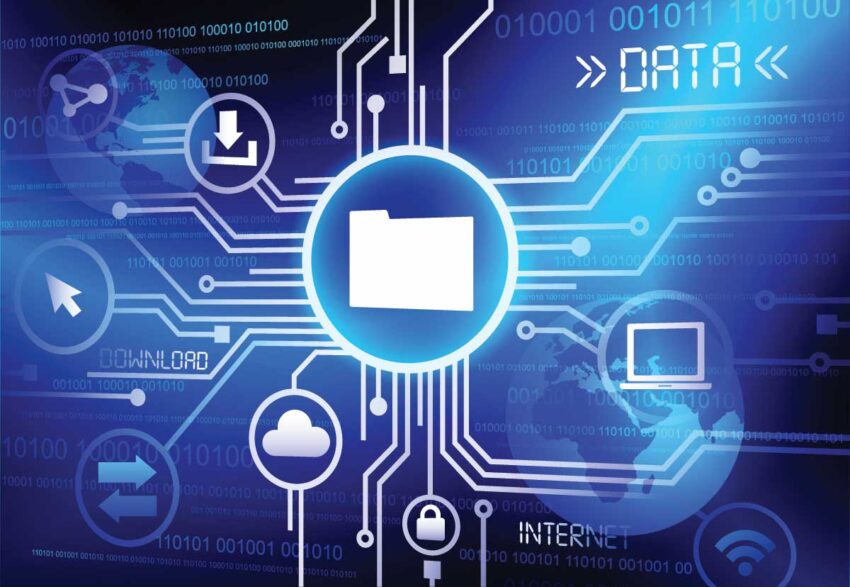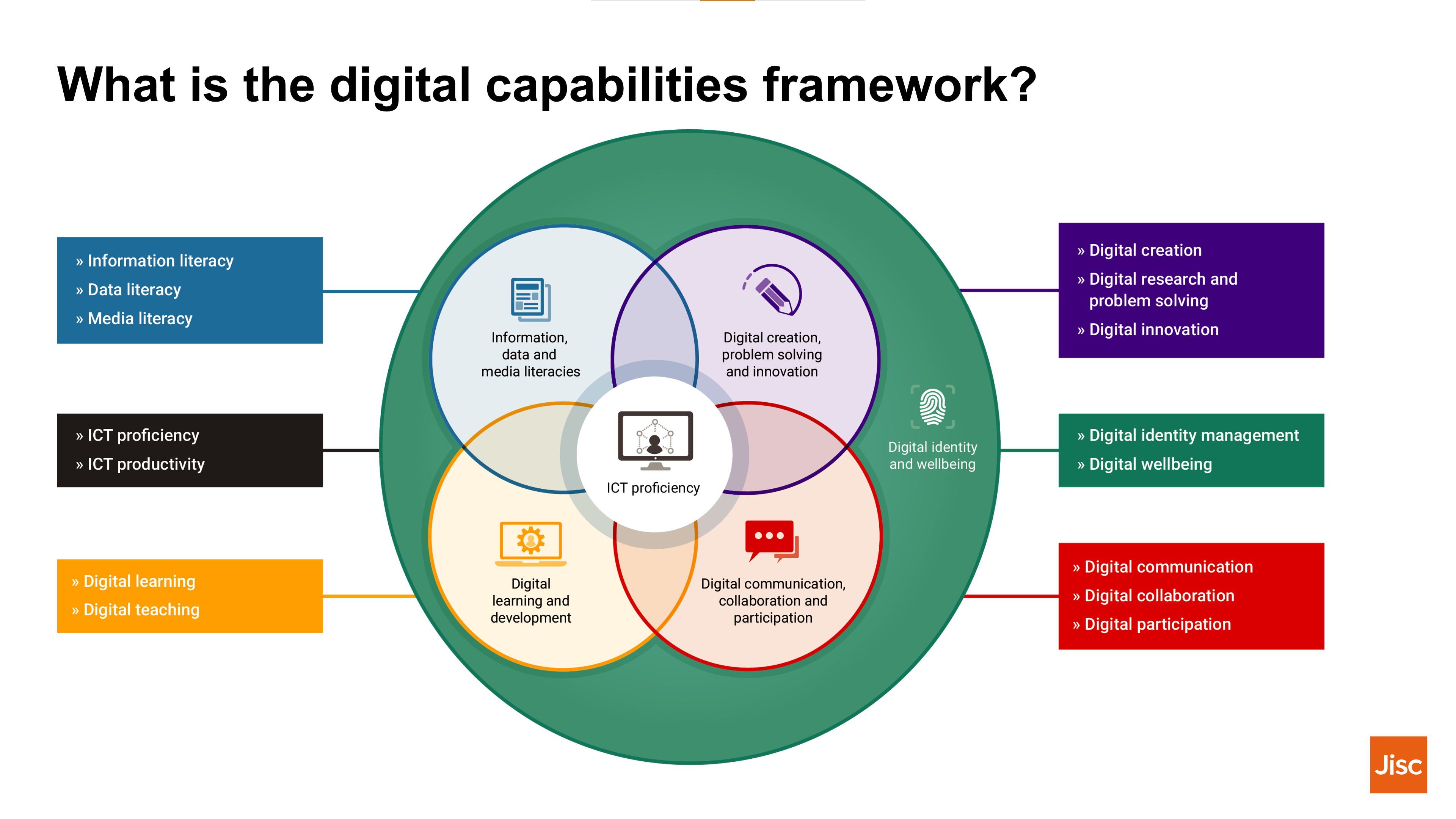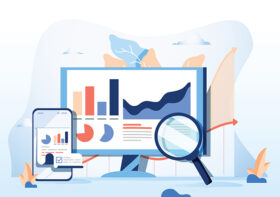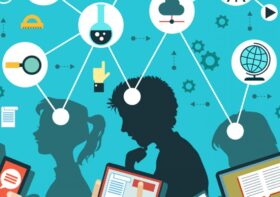Digital Identity, Safety, and Well-Being: Practical Strategies for Teachers and Students

Digital Literacy and Its Significance
Today, the advancement of technology has invaded every aspect of our lives. The digital world offers enormous benefits to us all. It provides various platforms allowing us to connect and collaborate with people around the globe. Also, the world of information is changing at an accelerating rate, with continual developments in the available information and tools. In this context, the capacity to learn new skills is a crucial element of digital literacies.
Moreover, to understand this changing world, we need to analyze, assess, contribute to, and evaluate the impacts of technology on everyday life and work. These multiple types of digital literacies will be critical for the citizens and workers who will thrive in the 21st century. Developing such abilities needs to be an essential part of lifelong learning.
Digital literacy plays an essential role in digital citizenship. As digital citizens, we are responsible for using technology to interact with the world around us. Jacobson et al. (2019) state, “the concept of digital literacy encompasses a range of skills and knowledge necessary to evaluate, use, and create digital information in various forms.” Digital literacies include data literacy, information literacy, visual literacy, media literacy, and metaliteracy, as well as related capacities for assessing social and ethical issues in our digital world. This idea aligns with Bawden (2008), claiming that digital literacy is a framework for integrating various other literacies and skill-sets. However, it does not need to encompass them all. Digital literacies represent the habits of mind that enable individuals to effectively evaluate and critique information and its use in the digital age.
The phrase “digital literacy” stands for a system of capabilities and skills that go beyond the level of mere technical know-how. “Being ‘digitally literate’ means having a deeper critical knowledge about technology and digital transformation, based on which individuals can act autonomously and creatively in the digital world” (Bildungstechnologien, 2021). Therefore, there are six elements proposed in the digital capabilities framework, as seen in Figure 1. This framework has been adapted by Bildungstechnologien, University of Basel, Switzerland, from the Jisc Digital Capabilities Framework.

Figure 1: Six elements of digital capabilities
What is Digital Identity, Safety, and Well-being?
As one of the digital capabilities framework, the issues of identity and safety wellbeing are oblique to all areas of the digital transformation. The consequence of this transformation is that individual online presence has become a central feature of the age of digital multimedia. Moreover, an increasing number of persons expect from others permanent availability and connectedness. This trend can be a source of distraction and stress.
Therefore, being literate in the area of digital identity, safety, and wellbeing means being aware of the benefits and risks online that presence and digital participation entails for identity, reputation, personal integrity, individual property, health, wellbeing, and sustainability, both at the individual and the collective level.
Martin et al. (2019) define digital identity as how one perceives oneself and others perceive an individual’s online activity. Compton-Lilly (2006) describes digital identity as “we view ourselves and represent our knowledge, experiences, and social connections” (Compton-Lilly, 2006). According to ISTE 2021 standards, students cultivate and manage their digital identity and reputation and are aware of the permanence of their actions in the digital world. Wise and O’Byrne (2015) recommend three different classifications of identity construction, embrace similar identities, establish separate identities, or resist creating an online identity. As digital identity includes establishing beliefs and self-identity to healthy usage of digital tools, digital education should provide students opportunities to develop their digital identity (Kim & Choi, 2018).
Moreover, The Digital Competence Framework 2.0 identifies safety as one of the critical components of digital competence. Safety includes the following aspects:
1. Protecting devices
To protect devices and digital content and to understand risks and threats in digital environments. To know about safety and security measures and to have due regard to reliability and privacy.
2. Protecting personal data and privacy
To protect personal data and privacy in digital environments. To understand how to use and share personally identifiable information while protecting oneself and others from damages. To understand that digital services use a “Privacy policy” to inform how personal data is used.
3. Protecting health and wellbeing
To be able to avoid health risks and threats to physical and psychological wellbeing while using digital technologies. To protect oneself and others from possible dangers in digital environments (e.g., cyberbullying). To be aware of digital technologies for social wellbeing and social inclusion.
4. Protecting the environment
To be aware of the environmental impact of digital technologies and their use.
Bildungstechnologien (2021), adopted from Jisc Digital Capabilities Framework, elaborates literacy in digital identity management and safety, which means the capacity to:
- develop and project a positive digital identity or identities;
- manage digital reputation (personal or organizational) across a range of platforms;
- build and maintain digital profiles and other identity assets such as records of achievement;
- review the impact of online activity;
- collate and curate personal materials across digital networks;
- act safely and responsibly in digital environments.
Meanwhile, at the practical level, literacy in digital wellbeing, health, and environmental issues means the capacity to:
- look after personal health, safety, relationships, and work-life balance in digital settings;
- use digital tools to pursue personal goals (e.g., health and fitness) and to participate in social and community activities;
- negotiate and resolve conflict;
- manage digital workload, overload, and distraction;
- act with concern for the human and natural environment when using digital tools.
Practical Strategies in the Classroom
The impact of technological advancement is inevitable. It is mainly how digital technologies impact the learner experience and change learners’ pathways through and beyond their studies. To comply with this trend, teachers must shift their paradigm in dealing with Y and Z generations who are digital natives. To this extent, teachers are expected to be more technologically savvy as incorporating technology in the teaching and learning process is a prerequisite for supporting the digital natives (Yuyun, 2017).
Moreover, today’s teachers need to find ways to create 21st-century citizens (and workers) who parrot less and think more. This condition requires fully integrating “meta” skills like critical thinking, problem-solving, video, and programming into our teaching, just as we now integrate reading and writing. To make this happen, teachers and students will need to work together in new forms of “partnering” in which students do what they do best—for example, use technology, find information, and create products that demonstrate their understanding—and in which teachers guide students by doing what they do best—for example, ask the right questions, put things into the proper context, and ensure quality and rigor. The new teaching roles that the 21st-century offers are so much better, so much more powerful, and so much more interesting than what came before that most teacher will, once they get their heads around those roles, rush to embrace them (Prensky, 2012).
As society’s understanding of technology broadens and deepens, we need to make sure that learners develop digital literacies to help them analyze and make sense of the digital world and its impact on their lives. To help learners navigate information in an expansive, ever-changing digital landscape, administrators, faculty members, librarians, instructional designers, and others who interact with learners in higher education have a pivotal role to play in helping students understand how information is shaped and shared today across the digital landscape. During a time of tremendous and rapid change in the information landscape, a critical consideration will be how best to integrate and inculcate digital literacies in the curriculum so that learners can develop a deep and well-informed understanding of what it means to be a consumer, creator, and sharer of digital content (Jacobson et al., 2019).
Therefore, the Royal College of Nursing (2021) shares key drivers for supporting learners in developing positive digital identities and thriving in a digital world. Notably, in managing personal and professional identities, digital footprint, recognizing online bullying, and managing time effectively, teachers and students need to be aware of the negative aspects and develop ways to limit these. Being a digital professional carries a responsibility towards digital citizens. They are responsible for sharing data and protecting it. To do so, teachers and students must demonstrate the following domains:
- the ability to develop, promote and safeguard appropriate digital identity(es) that support a positive personal and organizational reputation
- the ability to use digital technologies in ways that support personal wellbeing and safety and that of others
- the ability to recognize and act upon digital situations and events that might compromise personal, professional, or organizational security
- the ability to demonstrate and champion ethical, positive, healthy, and appropriate attitudes and behaviors concerning digital identity, wellbeing, and safety of self and others.
Royal College of Nursing (2021) recommends some practical strategies to manage:
Identity, image, and reputation
- I understand that any comment or image I post online can stay in the public domain and contribute to my digital footprint (a digital footprint is the information about a particular person who exists on the Internet due to their online activity).
- I can identify the benefits and risks of presenting myself in different ways online, e.g., professionally and personally.
- I use my digital footprint to showcase my skills and professional experience.
Health and wellbeing
- I know the importance of balancing screen time with other parts of my life.
- I can identify different forms of bullying, including cyberbullying, and suggest strategies for dealing with it, e.g., screenshot, block, report.
Digital security
- I understand basic rules for sharing data and data security, e.g., information governance.
- I can create and use secure passwords, e.g., apply characteristics of strong passwords.
- I am aware of simple encryption and the purpose, e.g., sending sensitive data more securely.
To support digital safety (security), Ribble and Miller (2013) suggest educational leaders and students the following tips:
- Educational leaders need to ensure that technology tools and information are protected. Students also need to become aware that even not doing something (e.g., keeping virus protection up to date) can impact themselves and others.
In the context of K-12 classroom, teachers can suggest to students the following tips suggested by The Ministry of Education in British Columbia (Jacobson et al., 2019):
- is aware that photographic images can be digitally manipulated for positive purposes or to mislead us and distort our perceptions of beauty and health. (Gr. 3-5)
- understand how the media can play an influential role in shaping our ideas about girls and boys. (Gr. 3-5)
- understands the social nature of digital media and technologies, and has basic vocabulary and knowledge for discussing the media landscape. (Gr. 6-9)
- is aware of his/her media habits, the array of media he/she uses weekly, and the role of digital media in his/her life. (Gr. 6-9)
- understands that presenting themselves in different ways online carries both benefits and risks. (Gr. 6-9)
- is aware of the gender stereotypes in video games, virtual worlds, and elsewhere on the Internet. (Gr. 6-9)
- understand the different pressures teens face when editing, posting, and commenting on photos online. (Gr. 10-12)
- is aware of how he/she and others represent themselves online, and the relationship between online and offline selves (Gr. 10-12)
References:
Bawden, D. (2008). Origins and Concepts of Digital Literacy. In C. Lankshear and M. Knobel (Eds.), Digital Literacies: Concepts, Policies, and Practices (pp. 17-32N). Peter Lang. http://citeseerx.ist.psu.edu/viewdoc/download?doi=10.1.1.741.4617&rep=rep1&type=pdf
Bildungstechnologien. (2021). Digital identity, safety, and wellbeing. In Framework Digital Literacies. Basel: University of Basel. Retrieved October 18, 2021, from https://digitalskills.unibas.ch/en/literacy-framework/literacy-6-digital-identity-safety-and-well-being/
Compton-Lilly, C. (2006). Identity, childhood culture, and literacy learning: A case study. Journal of Early Childhood Literacy, 6(1), 57-76.
Jacobson, T., Gilchrist, D., Head, A., & Lippincott, J. (July 29, 2019). 7 Things You Should Know About Digital Literacies, EDUCAUSE Learning Initiative. https://library.educause.edu/resources/2019/7/7-things-you-should-know-about-digital-literacies
Kim, M., & Choi, D. (2018). Development of youth digital citizenship scale and implication for an educational setting. Journal of Educational Technology & Society, 21(1), 155-171.
Martin, F., Gezer, T. & Wang, C. (2019). Educators’ Perceptions of Student Digital Citizenship Practices, Computers in the Schools, 36(4), 238-254. https://doi.org/10.1080/07380569.2019.1674621
Prensky, M. (2012). From Digital Natives to Digital Wisdom. In From Digital Natives to Digital Wisdom: Hopeful essays for 21st Century learning (pp. 201–215). essay, Corwin. https://marcprensky.com/writing/PrenskyIntro_to_From_DN_to_DW.pdf
Ribble, M. and Miller, T. N. (2013). Educational Leadership in an Online World: Connecting Students to Technology Responsibly, Safely, and Ethically. International Society for Technology in Education, 17(1), pp. 137-145. https://files.eric.ed.gov/fulltext/EJ1011379.pdf
Royal College of Nursing. Digital identity, wellbeing, and safety. Retrieved October 18, 2021, from https://www.rcn.org.uk/clinical-topics/ehealth/digital-skills/digital-skills-digital-identity
Six elements of digital capabilities figure. Retrieved October 21, 2021, from https://digitalcapability.jisc.ac.uk/what-is-digital-capability/individual-digital-capabilities/our-digital-capabilities-framework/
Wise, J. B., & O’Byrne, W. I. (2015). Social scholars: Educators’ digital identity construction in open, online learning environments. Literacy Research: Theory, Method, and Practice, 64(1), 398-414.
Yuyun, I. (2017). Curriculum and Technology Design: A Course to Explore Technology Applications in EFL Curriculum Design. Journal of ELT Research, 2(1), 78–86. http://doi.org/10.22236/JER



Mun Shing Cheong
Hi Ignas, thank you for laying out clearly what digital literacy entails. The digital competence framework you shared provides a useful way to frame digital competence from which we can formulate practical strategies to equip students for a digital future. This quote really resonates with me and I can’t agree more with it: “today’s teachers need to find ways to create 21st-century citizens (and workers) who parrot less and think more.”